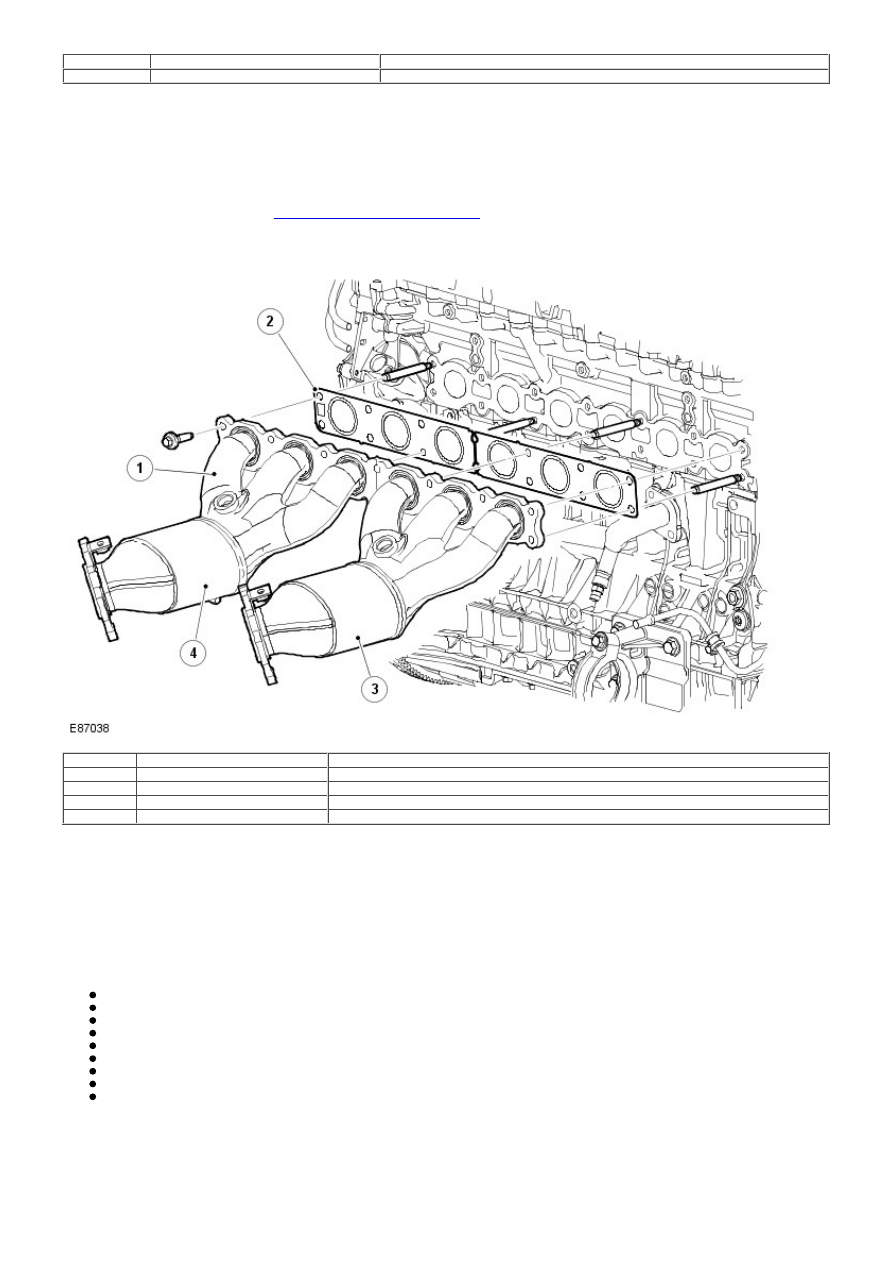Frelander 2. Manual - part 158

5
-
Bolt (2 of)
6
-
Variable tract valve
The intake manifold attaches to the cylinder head with 6 bolts and the oil pan with 2 bolts.
The manifold is capable of varying both intake tract length and plenum volume by means of 2 separate valves.
At low engine speeds, long intake tracts are utilized to provide optimum engine torque. Shorter tracts are used at medium speeds,
again, to optimize engine torque for the existing engine speed range.
At higher engine speeds the benefits of optimizing the tract lengths are outweighed by the necessity of maintaining an
appropriate supply of air to meet the engines requirements. Therefore, the plenum valve is opened to create a single, large
plenum volume to provide the maximum quantity of air to charge the engines cylinders.
For additional information, refer to:
Intake Air Distribution and Filtering
(303-12A Intake Air Distribution and Filtering - I6 3.2L
Petrol, Description and Operation).
Exhaust Manifold
Item
Part Number
Description
1
-
Exhaust manifold assembly
2
-
Gasket
3
-
Exhaust manifold - cylinders 1 to 3
4
-
Exhaust manifold - cylinders 4 to 6
The exhaust manifold comprises 2 separate manifold assemblies. One manifold is used for cylinders 1 to 3 and the second
manifold is used for cylinders 4 to 6. The manifolds are sealed to the cylinder head with a gasket and secured with 14 bolts.
Each manifold comprises 3 fabricated branches, which merge into an integral catalytic converter. A threaded boss is positioned
where the 3 branches merge and provides for the fitment of a pre-catalyst Heated Oxygen Sensor (HO2S). The catalytic converter
outlets have offset flanges which mate with corresponding flanges on the front section exhaust system.
A bracket on each outlet flange allows for the attachment of an exhaust manifold heat shield.
CRANKSHAFT, BEDPLATE AND OIL PAN COMPONENTS
The crankshaft and oil pan components are:
Crankshaft and main bearings
Crankshaft vibration damper and cooling valve
Bedplate
Oil filter and cooler assembly
Oil pump assembly
Oil pick-up
Oil pan
Oil level gage
Starter motor
Crankshaft and Main Bearings